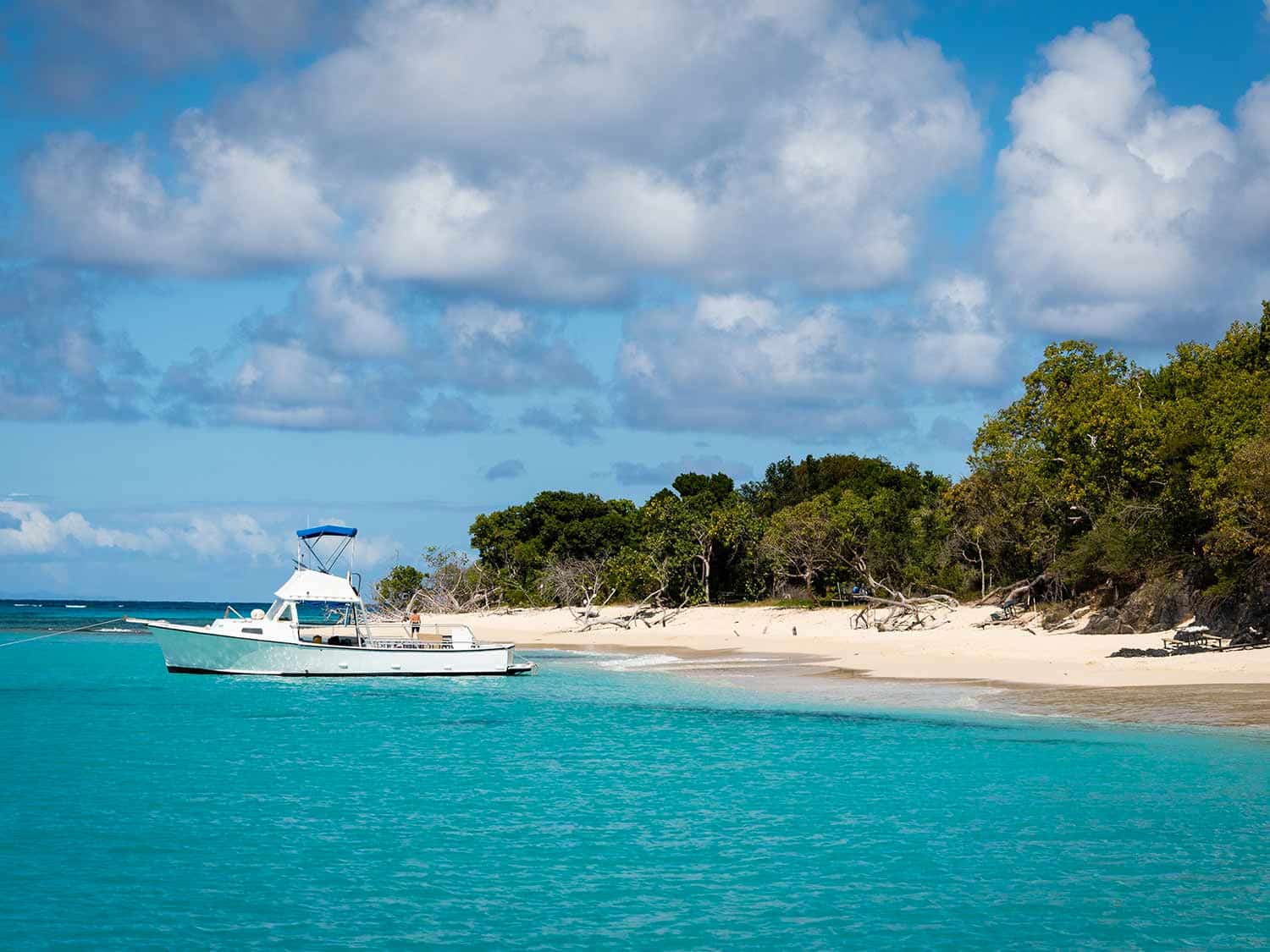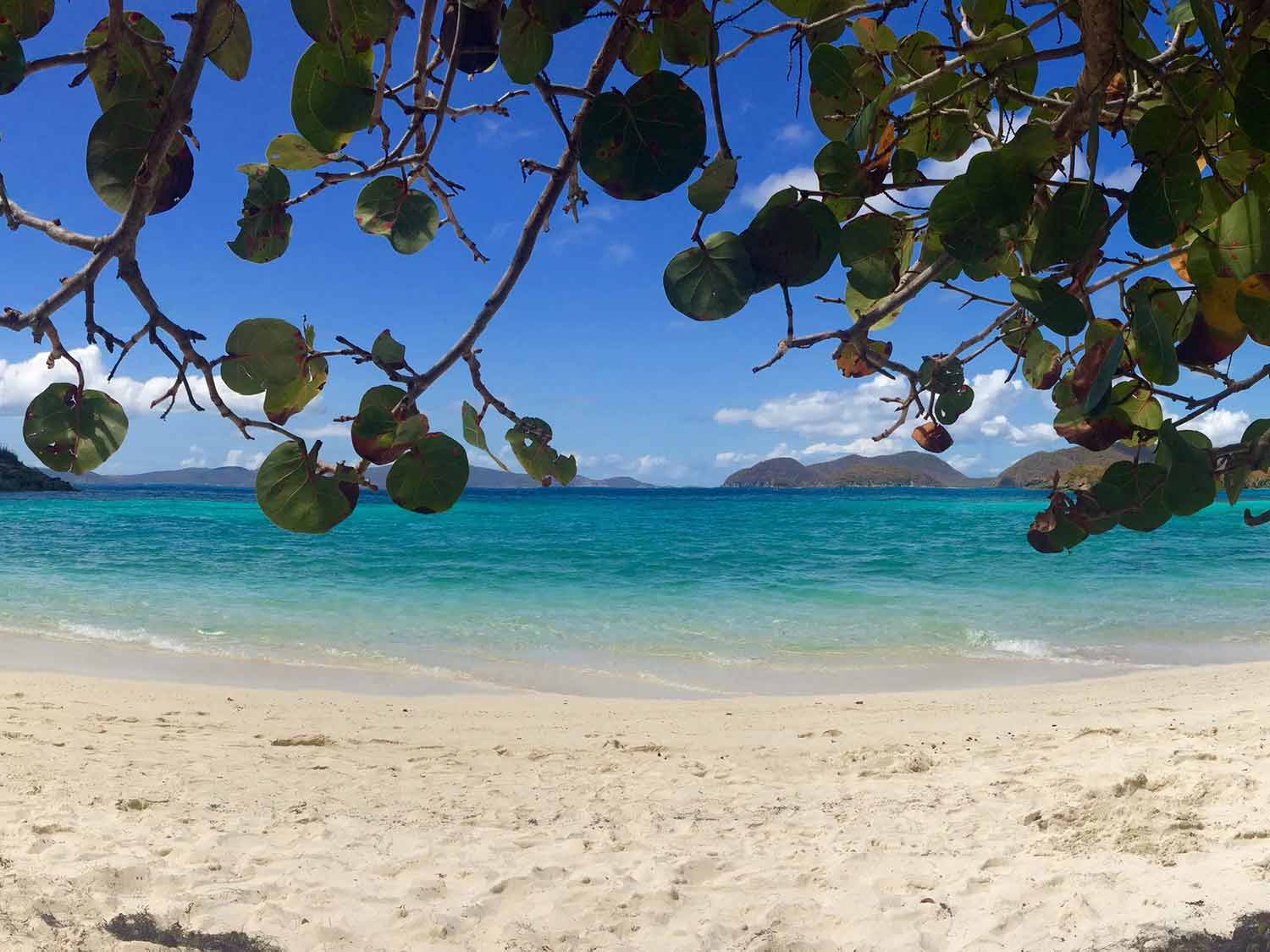Best Snorkeling Spots In The U.S. Virgin Islands
These island reefs just offshore are home to eagle rays, lobsters, schooling fish and even seahorses.
The U.S. Virgin Islands offer snorkelers a wide mix of underwater attractions. St. Croix alone delivers reefs, plus a pier where small critters have taken up residence among the sponges that cover the pilings. Choose St. Thomas for its amenity-packed beaches, and for dayboats that visit offshore reefs. St. John, the most undeveloped of the three islands, offers so much solitude on the beaches and reefs, where you can swim face to face with trumpetfish, schools of fish and sea turtles. These are the best sports for snorkeling in the U.S. Virgin Islands.
Cow and Calf Rocks, St. Thomas
Reachable by boat, Cow and Calf Rocks is both a snorkel and a scuba diving site. Most vendors, such as Aqua Action Dive Center, will ferry guests the 45 minutes from the city of Charlotte Amalie to the site. We love the spot for the elkhorn coral, lobsters and occasional sea turtle sightings. Plus, one highlight of visiting a spot with divers is that they'll often hover and point out the harder-to-find critters deeper down, from eels to stingrays.
Shoys Beach, St. Croix
Find Shoys Beach on the east end of the island, less than 10 minutes by car from the town of Christiansted. Locals love the spot for the sea grape trees lining the shore and providing shade. Visitors like the easy access to reefs home to lobster, spotted moray eels, stingrays and more.
Coki Point Beach, St. Thomas
Coki Point Beach, found on the northeastern shore of St. Thomas, is a good pick for families who want amenities—such as beach chairs and umbrellas available for rent—along with their snorkeling. A sugar-sand bottom makes for easy entry, and in the water, snorkelers will likely encounter parrotfish, remoras, schools of blue tang fish and even shoals of squid.
Buck Island, St. Croix
The nation's only underwater national monument, Buck Island gives guests the chance to guide themselves through a marked snorkel trail that winds through the 704 protected acres. Visiting the island does require booking a daytrip with a local snorkel tour company, so don't expect solitude.
But, once the boat moors, you're free to explore on your own. We love swimming a bit away from the boats to the southeast side of Buck—the side that faces St. Croix. There, you can encounter hawksbill turtles, needlefish and occasionally eagle rays.
Leinster Bay, St. John
Find Leinster Bay, aka Waterlemon Cay, tucked inside a cove along the north shore, located roughly 25 minutes by car from the town of Cruz Bay. Taxi drivers will take you to the spot, but because not many travelers take them up on the offer, it tends to be free from crowds—always a bonus in our book. In the water, you'll likely see angelfish, trumpetfish and the odd barracuda passing by. Plus, out in the sea grass beds, you may spy a green sea turtle nibbling on the buffet.
Great Lameshur Bay, St. John
Those spending at least one night on island can trek to Great Lameshur Bay on the south side of St. John. This wide flat beach opens to a wide bay where you can easily pass an afternoon snorkeling amid bigger marine fauna, including eagle rays, nurse sharks and turtles, as well as all the reef fish that flit between the sponges and corals. Keep in mind that this outpost spot is far from amenities, so pack a picnic lunch, and bring water and reef-safe sunblock.
Frederiksted Pier, St. Croix
What was once the pier for the west side town of Frederiksted is now a favorite spot for snorkelers. Weave between the pilings to watch juvenile fish, crabs, shrimps and even seahorses seeking sanctuary among the red rope sponges and orange corralimorph coral. Keep an eye on the sandy bottom for flying gurnards, a fish whose pectoral fins open like wings to reveal stripes of turquoise. You may also find batfish, an odd-shaped fish that appears to walk across the bottom.
Jumbie Bay, St. John
Located 10 minutes by car from Cruz Bay, Jumbie Bay is the turn just before Trunk Bay. We love that this spot is still somewhat under the radar, as parking allows for just six cars at a time. Plus, the site offers a mix of crags and crevices among the limestone shoreline, and 100 feet offshore, so you can see a greater mix of sea life, from crabs and eels to schools of sergeant major and Creole wrasse fish.
Cane Bay, St. Croix
With a scuba shop located just across the street from this white sand beach, this north shore site is as easy as it gets for newer snorkelers who may have questions about mask fit or where to find the best critters. Scuba divers love the location for its quick access to a wall—that is, a reef that drops away sharply to the depths.
But you don't need to go deep to spy tons of life, from lobster to Caribbean reef octopus. We love that you can enjoy sunning on the beach and snorkeling as much as you like, then pop across the street to the restaurant Eat at Cane Bay for a drink and Caribbean-spiced chicken wings, or stay for a fuller meal, such as the mahi tacos or the crispy fish reuben.
Salt Pond Bay, St. John
The wide bay that unfolds in front of Salt Pond, found off the island's southern tip, is a healthy mix of marine life, from juvenile fish to sea turtles. We love that snorkelers need not swim too far from shore before cruising alongside bigger snapper, jacks and other big fish. Just remember that this site is one of the more remote beaches on island, so pack in any snacks, drinks and towels that you may need.

